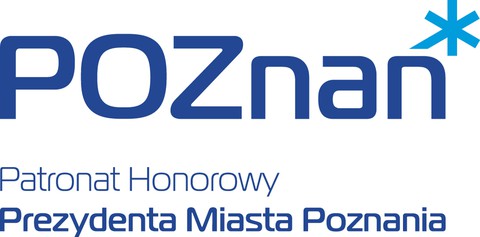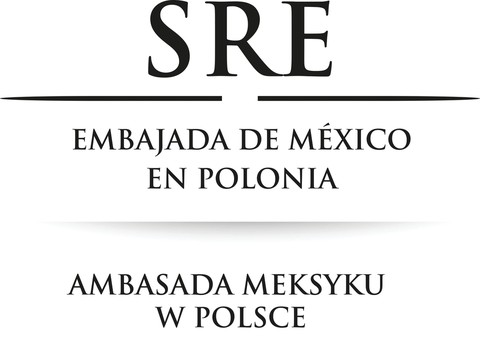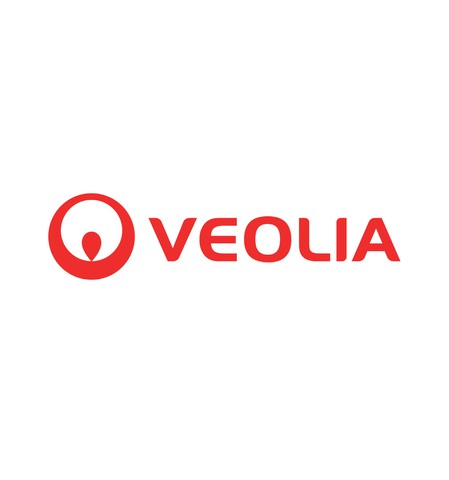Frida Kahlo i Diego Rivera. Polski kontekst / 28.09.2017-21.01.2018
Kuratorka wystawy: Dr Helga Prignitz-Poda
biogramy
Wystawa „Frida Kahlo i Diego Rivera. Polski kontekst” podzielona była na kilka części.
W Sali Wystaw zostały zaprezentowane dzieła Kahlo i Rivery z kolekcji Jacquesa i Natashy Gelman z Meksyku. Frida Kahlo de
Rivera to artystka ciesząca się niezwykłą sławą na całym świecie. Znana
jest przede wszystkim ze swoich licznych autoportretów, na których
widoczne są „ból i pasja″ wyrażone w intensywnej, jaskrawej kolorystyce.
W wieku 22 lat Kahlo poślubiła sławnego meksykańskiego malarza, Diego
Riverę. W 1953 roku, podczas pierwszej wystawy indywidualnej Fridy Kahlo
w Meksyku, jeden z krytyków napisał:
„Nie sposób oddzielić życia i twórczości tej
niezwykłej osoby. Jej obrazy są jej biografią″. W Centrum Kultury ZAMEK
będzie można zobaczyć powszechnie znane, wręcz ikoniczne prace Fridy
Kahlo, takie jak m.in. „Autoportret z naszyjnikiem”, „Portret Diego
Rivery” i „Autoportret MCMXLI”. W sumie pokazanych zostanie ok. 40 dzieł
Kahlo i Rivery oraz słynne fotograficzne wizerunki artystki, wykonane
m.in. przez Nickolasa Muraya w latach 30. i 40.
Bezpośrednio z Sali Wystaw można było przejść do specjalnie zbudowanego kameralnego
kina, w którym wyświetlane były dokumentalne filmy, opowiadające o twórczości i życiu Fridy Kahlo i jej męża.
W
zachodnim skrzydle Zamku można było oglądać zdjęcia Bernice Kolko – fotografki,
która była przyjaciółką Fridy w ostatnich latach życia artystki.
Zażyłość między nimi była tak duża, że Kolko miała zgodę na wykonywanie
bardzo osobistych zdjęć Fridy. Uwieczniła malarkę w sytuacjach
niepozowanych, w naturalnym otoczeniu, w ogrodzie, z przyjaciółmi, a nawet chorą w łóżku.
W kolejnej sali została pokazana twórczość
Fanny Rabel, która należała do czwórki najbliższych uczniów Kahlo, a także współpracowała z Diego Riverą przy realizacji jego
wielkoformatowych murali. Jej prace, przedstawiające codzienne życie
Meksyku w latach 40. i 50., dokumentują otoczenie, w jakim żyła i tworzyła Frida Kahlo.
Kolejna przestrzeń poświęcona była Wystawie Sztuki Meksykańskiej w Polsce w 1955 roku. Było to
jedno z najważniejszych wydarzeń w polskim życiu artystycznym w latach
50. XX wieku.
Znalazły się na niej prace kluczowych dwudziestowiecznych
artystów Meksyku, w tym obraz Fridy zatytułowany „La Mesa Herida”
(Zraniony stół), który był największym obrazem kiedykolwiek namalowanym
przez artystkę i ostatni raz widzianym właśnie wtedy w Polsce.
Wystawa „Frida Kahlo i Diego Rivera. Polski kontekst” zgłębiła także fenomen popularności Fridy Kahlo i oddziaływania jej sztuki
na kolejne pokolenia twórców, nie tylko z Meksyku.
spacer
Wystawie towarzyszyły lekcje muzealne, wykłady, zwiedzania i warsztaty twórcze. Poniżej pełne kalendarium wydarzeń.
regulamin sesji foto
The
Jacques and Natasha Gelman Collection
of 20˚Century Mexican Art and The
Vergel Foundation © 2016 Banco de México Diego Rivera Frida Kahlo
Museums Trust, Mexico,
D.F. / Artists Rights Society (ARS), New York
Program edukacyjny towarzyszący wystawie
Wystawie towarzyszył bogaty program edukacyjny. Dla naszych gości przygotowaliśmy cykl warsztatów, kursów oraz wykładów. Były one zróżnicowane pod względem treści i skierowane do różnych grup wiekowych. Były to zarówno zajęcia wymagające aktywności manualnej, zaangażowania werbalnego i kreatywności, ale też takie, które przeznaczone były dla osób uczących się poprzez słuchanie.
Dodatkowo, przygotowaliśmy lekcje muzealne dla szkół i zwiedzania wystawy z przewodnikiem. Lekcje muzealne były doskonałą okazją do poruszenia tematów wpisujących się w program nauczania na wszystkich poziomach kształcenia szkolnego. Uczestnicy oprócz zapoznania się z twórczością słynnych artystów – mogli poznać również inne ciekawe wątki poboczne.
Zależało nam na tym, żeby wystawa była jak najbardziej dostępna dla wszystkich zwiedzających, dlatego przygotowaliśmy listę udogodnień dla osób z niepełnosprawnościami oraz wydarzenia dedykowane i dostosowane do potrzeb osób z różnymi dysfunkcjami. W naszym programie znalazły się specjalne oprowadzania po wystawie dla osób niewidzących i słabowidzących, niesłyszących i słabosłyszących oraz gości z dysfunkcjami ruchu. Poniżej prezentujemy film, który pokazywał drogę na wystawę osobom z niepełnosprawnościami. W czasie trwania wystawy współpracowaliśmy z Fundacją Mili Ludzie oraz tłumaczami Polskiego Języka Migowego.
ulotka edukacyjna
PROGRAM EDUKACYJNY - FILM
dotrzeć na wystawę - film instruktaż
Frida Kahlo
Autoportret z małpami /
Self-portrait with Monkeys, 1943
olej na płótnie / oil on canvas, 81,5 × 63 cm
The Jacques and
Natasha Gelman Collection
of Mexican Art, the Vergel Foundation and the Tarpon
Trust
© 2017 Banco de
México Diego Rivera Frida Kahlo Museums Trust, Mexico,
D.F. / Artists Rights
Society (ARS), New York
Zapowiedź wystawy "Frida Kahlo i Diego Rivera. Polski kontekst"
Wystawa w liczbach
28 prac Fridy Kahlo,
10 prac Diego Rivery,
11 prac innych artystów, między innymi Nickolasa Muraya z kolekcji Jacquesa i Natashy Gelmanów z Meksyku.
Zobaczyliśmy także:
37 prac uczennicy Fridy, Fanny Rabel,
70 fotografii Bernice Kolko,
14 prac z Muzeum Narodowego w Warszawie,
20 innych dokumentów: recenzje, plakaty, katalogi z wystawy z 1955 roku i innych wystaw Sztuki Meksykańskiej w Polsce,
40 prac artystów z grupy meXylo.
Podsumowanie wystawy
118 000 osób obejrzało prace meksykańskich artystów oraz artystek o polskim pochodzeniu z nimi związanych.
W ramach bogatego programu edukacyjnego towarzyszącego wystawie, sfinansowanego przez Fundację Veolia Polska odbyło się:
435 lekcji muzealnych,
407 zwiedzań grupowych.
Na temat wystawy powstało:
900 artykułów, audycji, programów i wzmianek.
dla mediów
Martyna Nicińska
Rzeczniczka prasowa

























